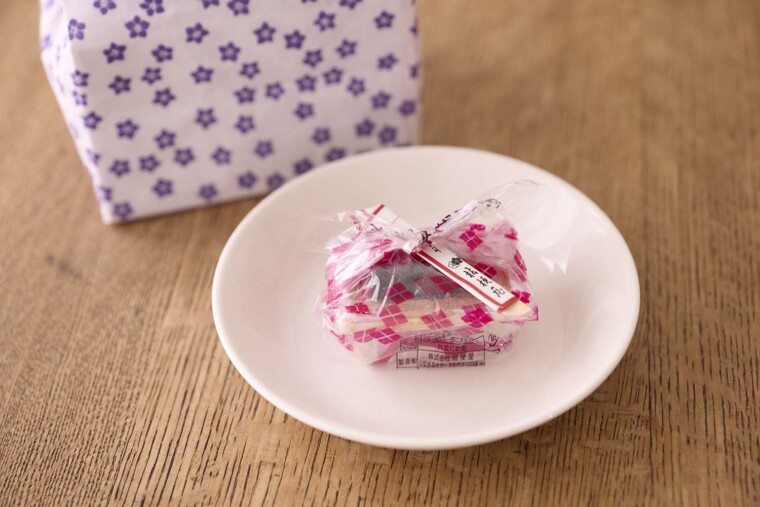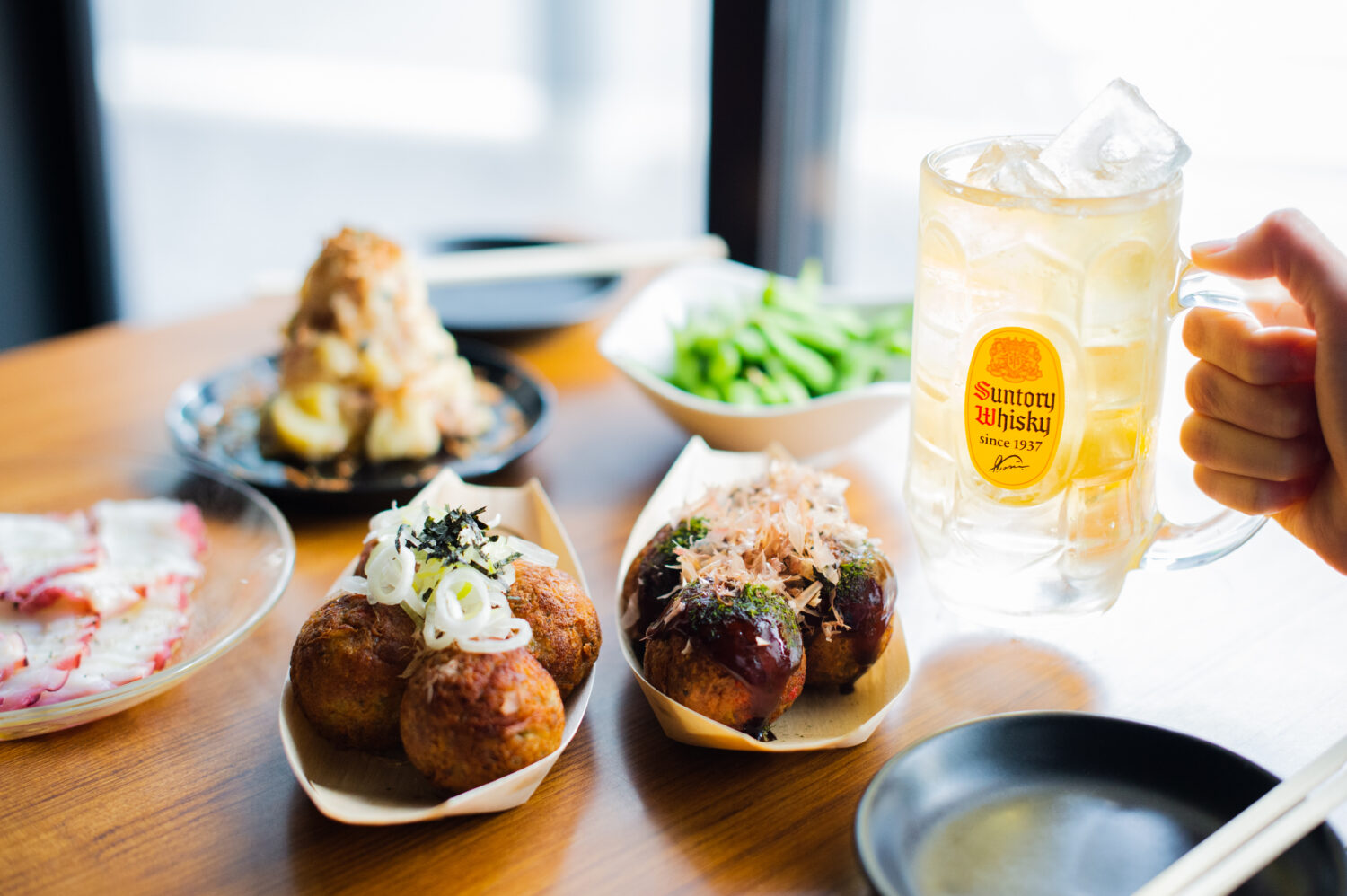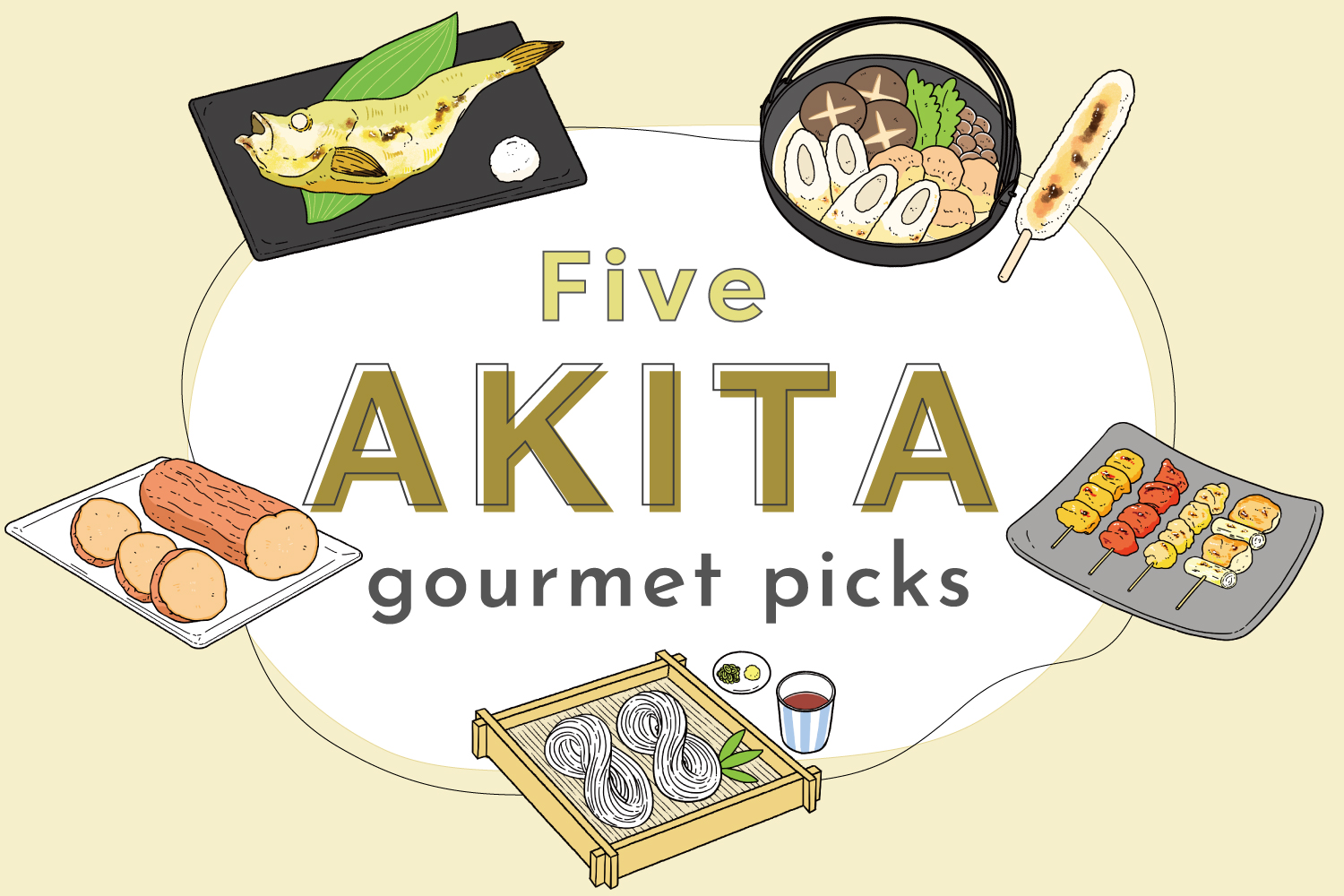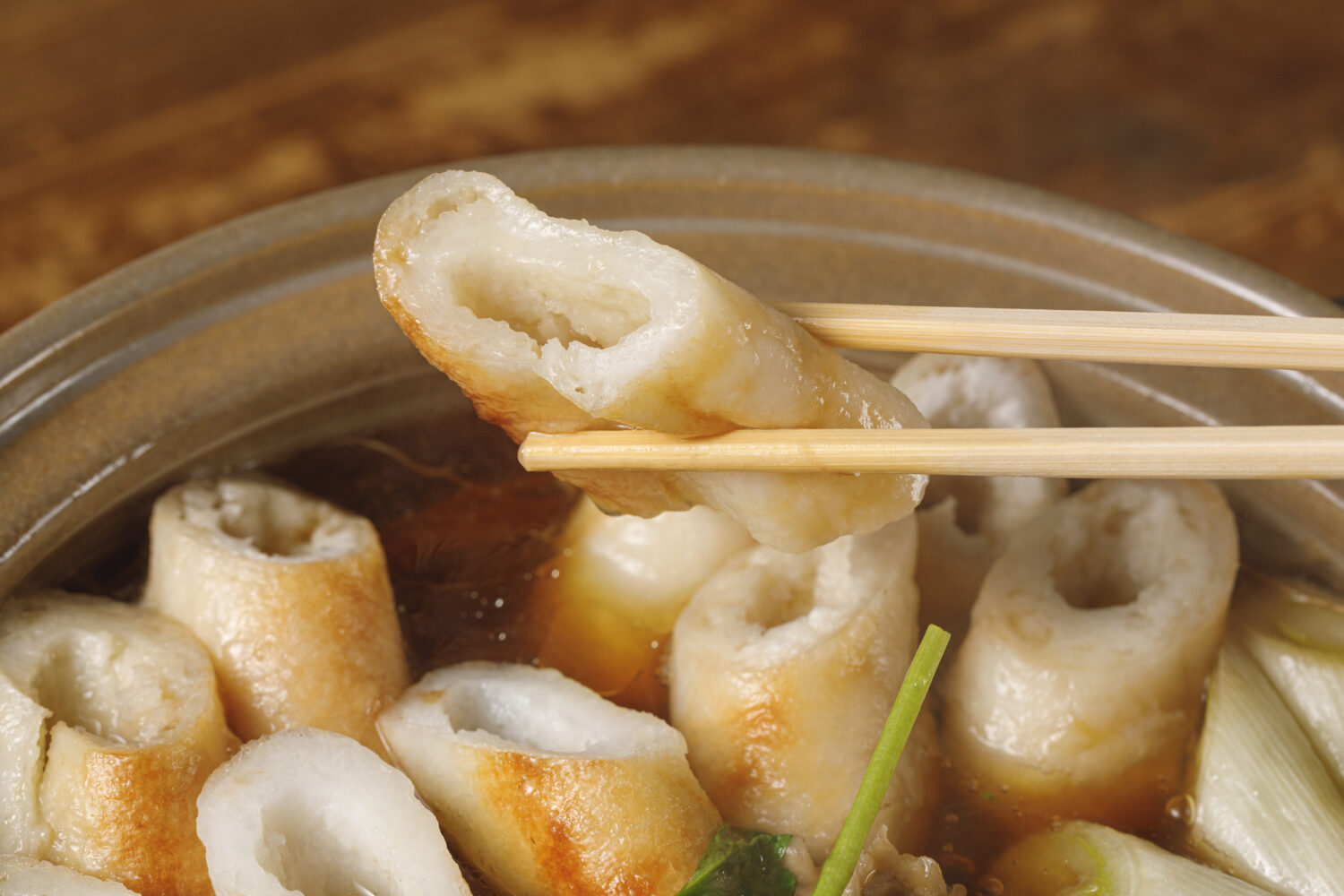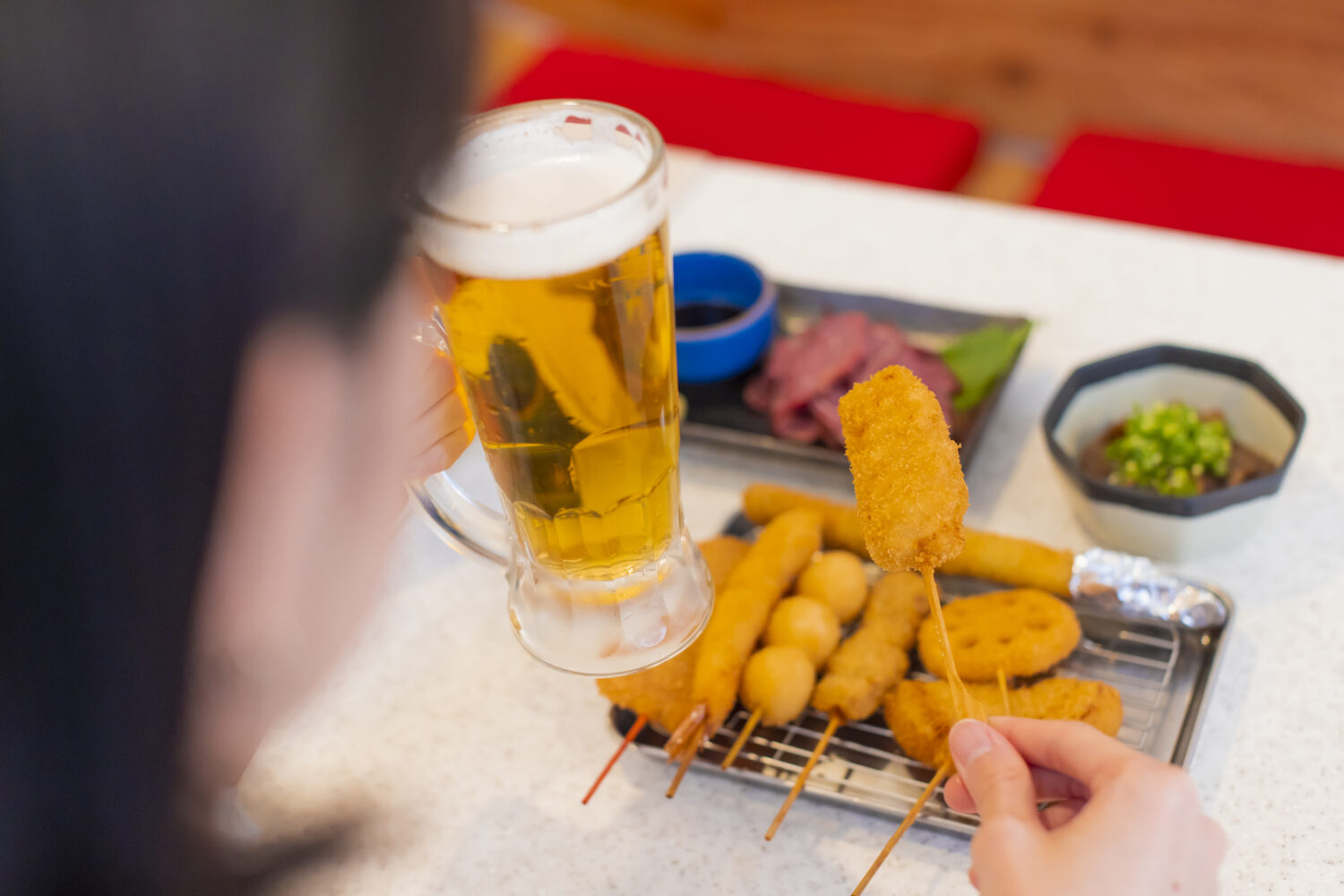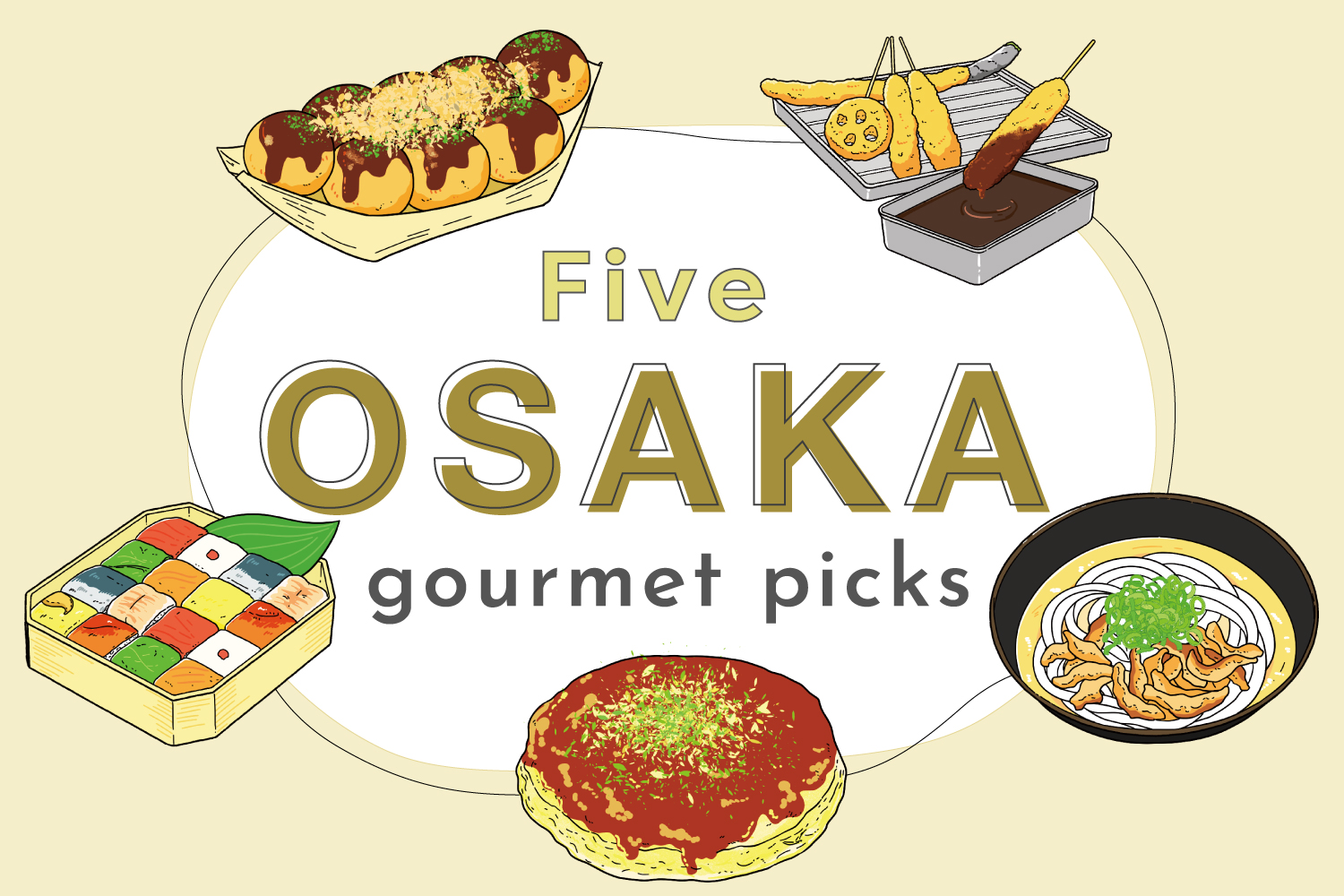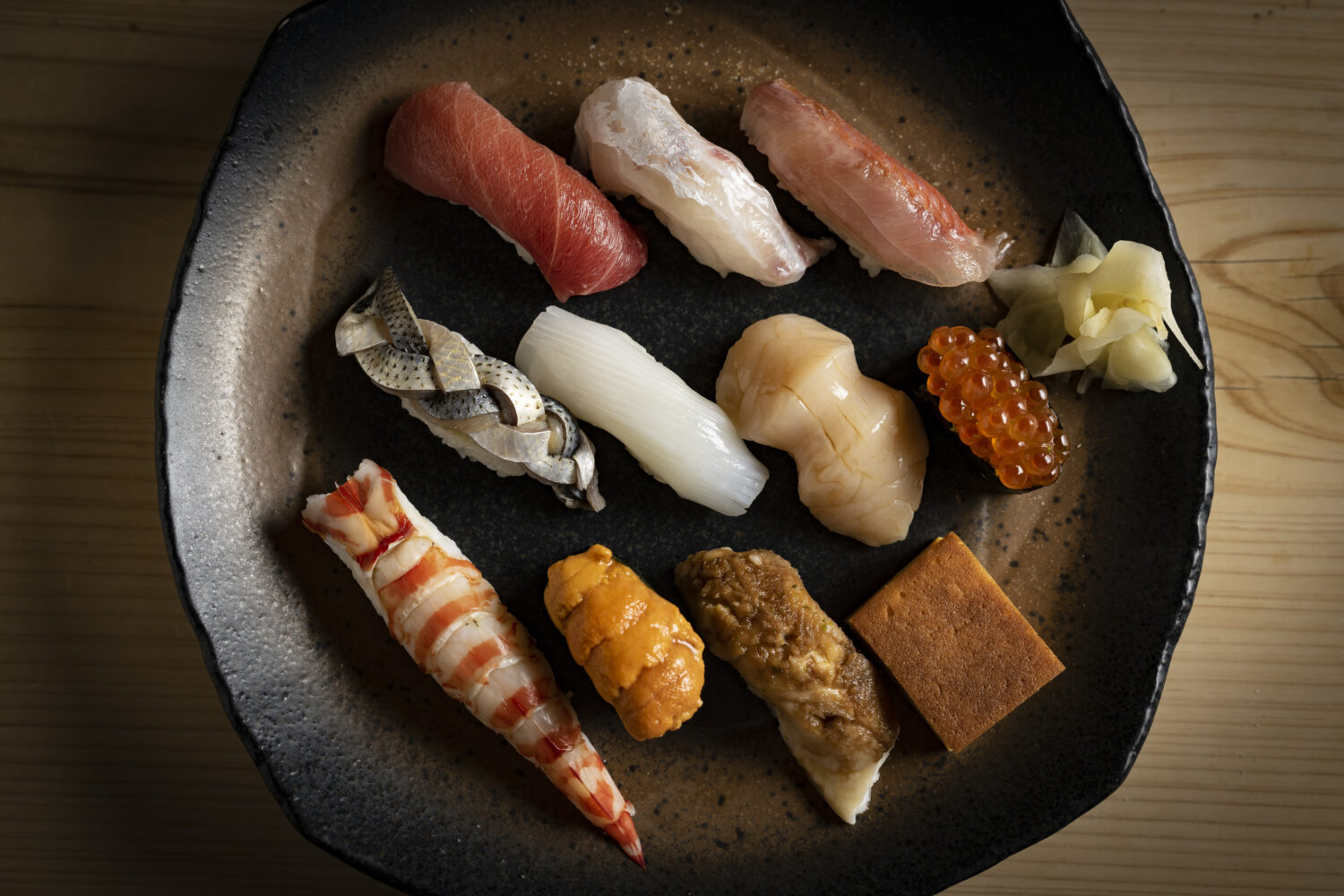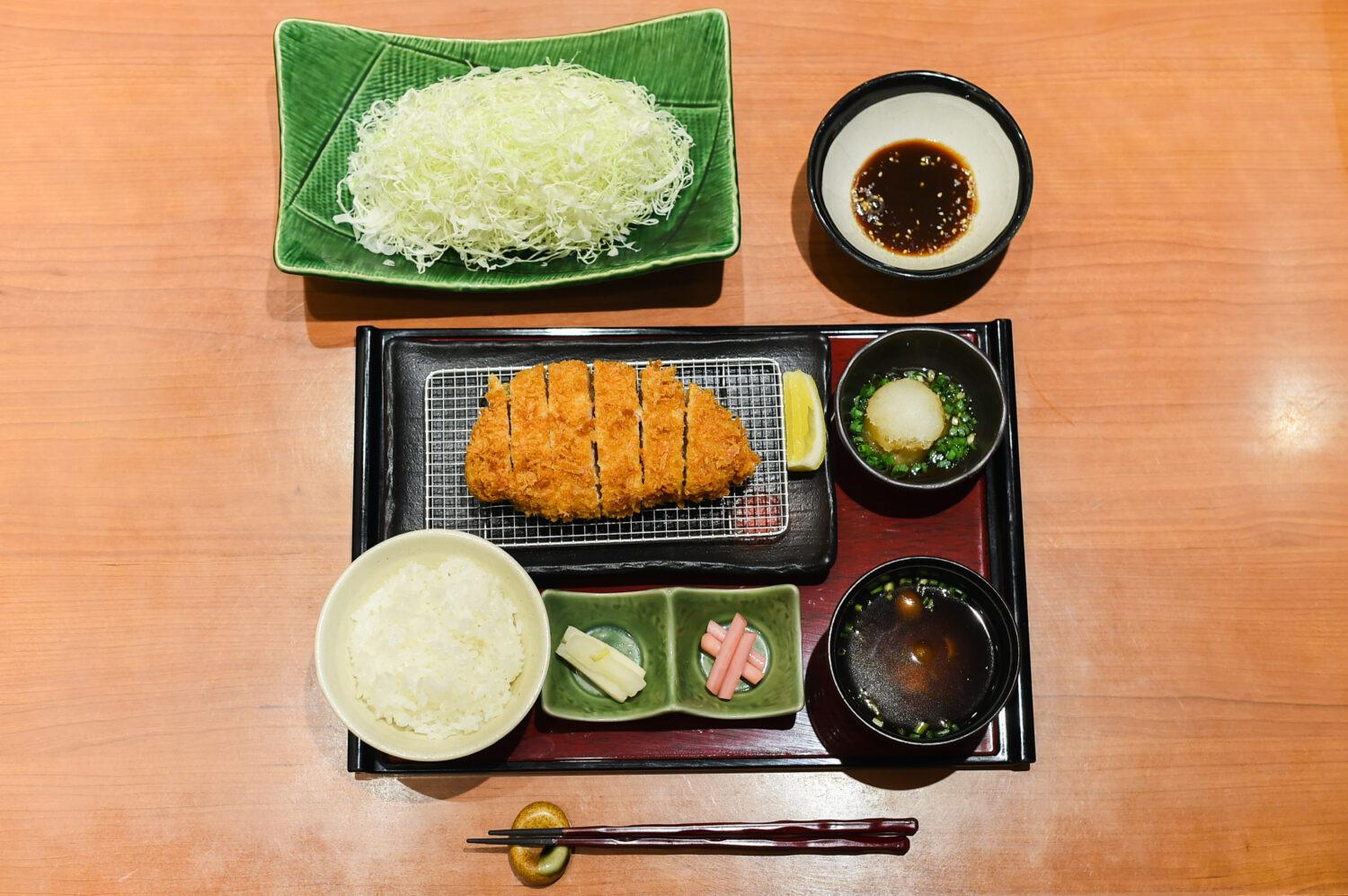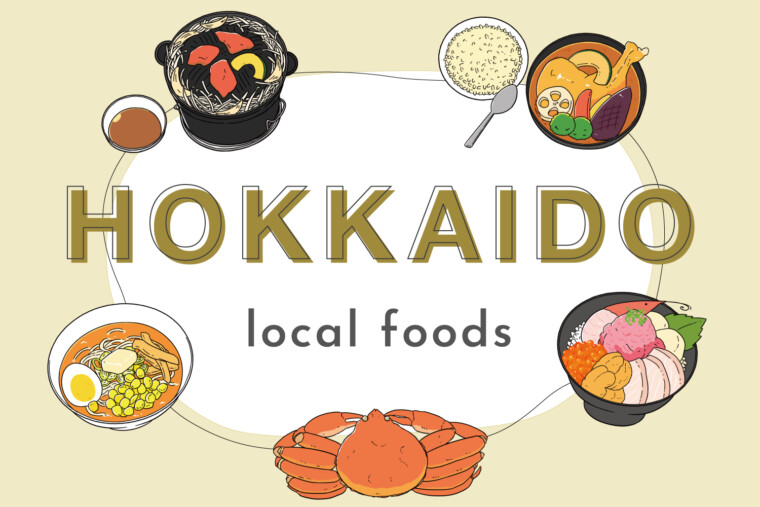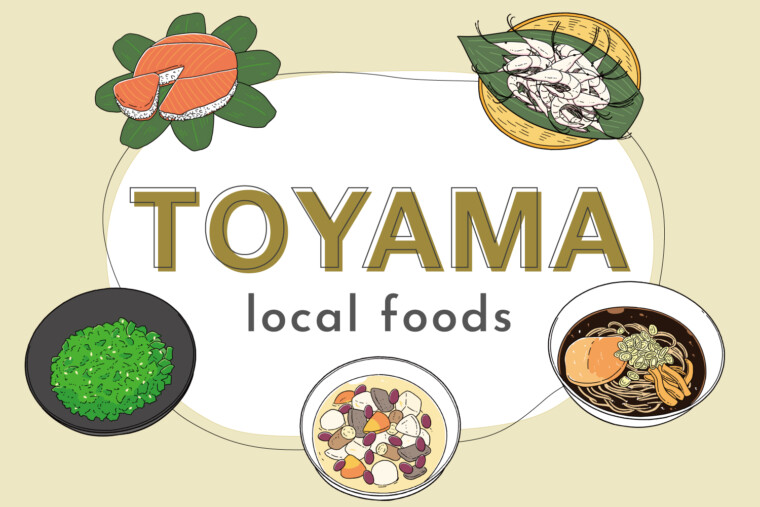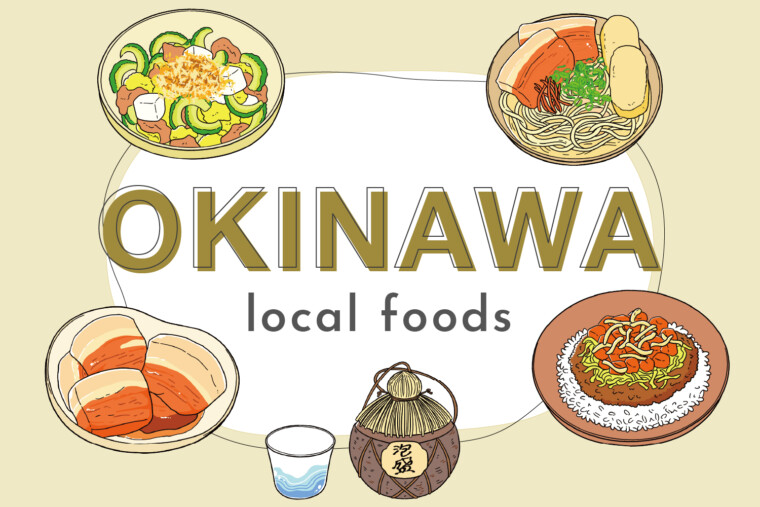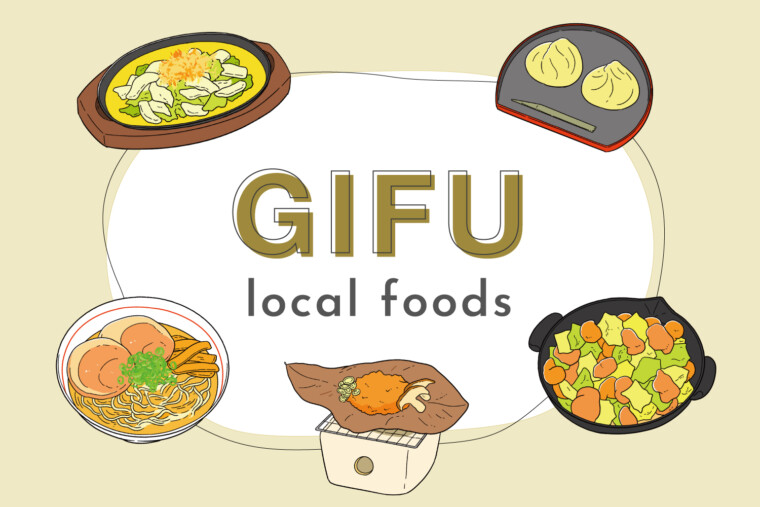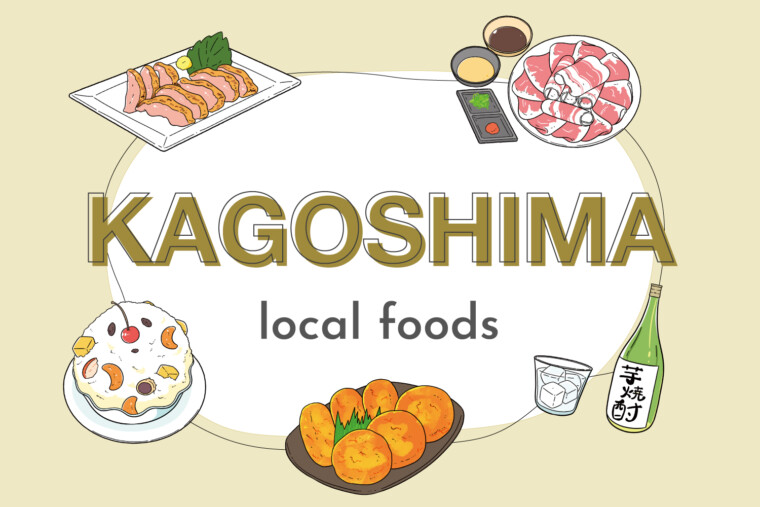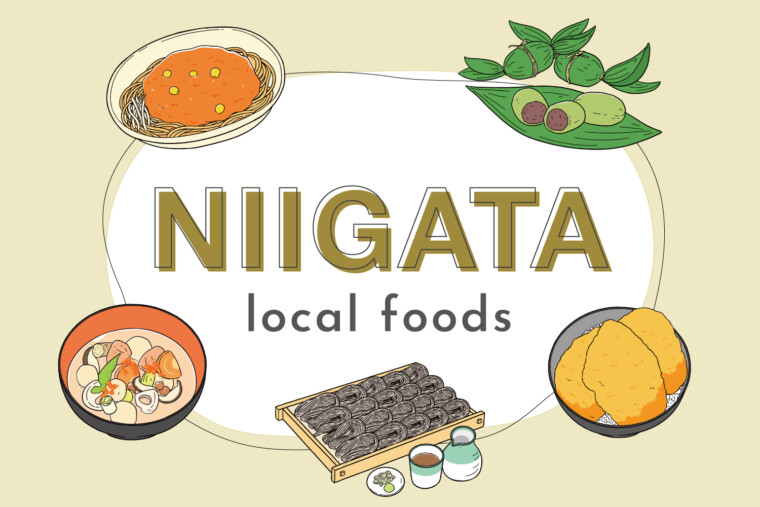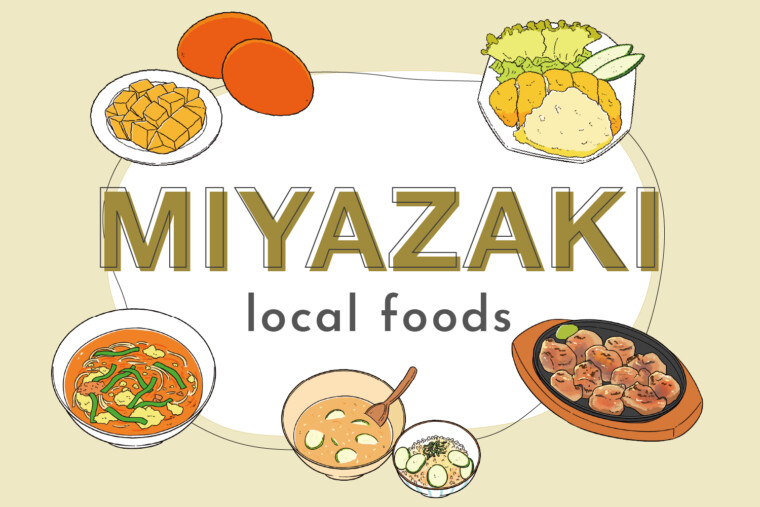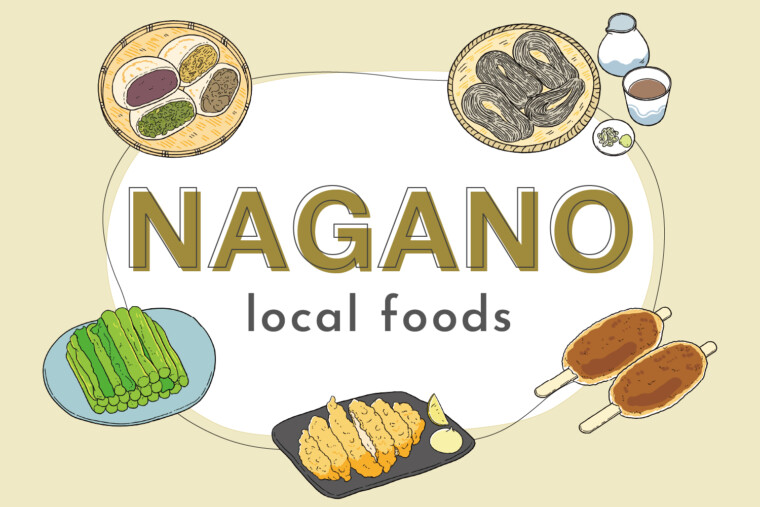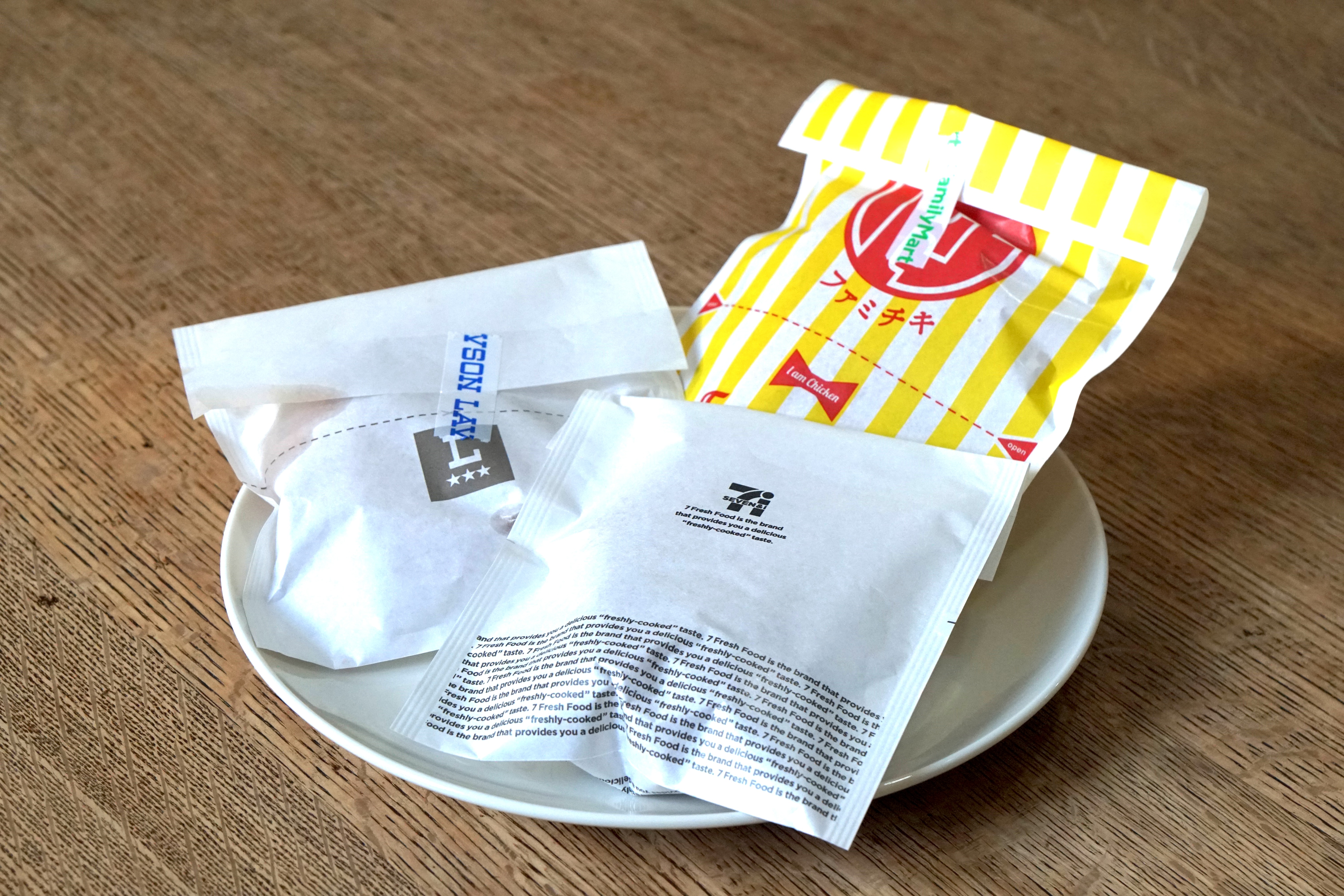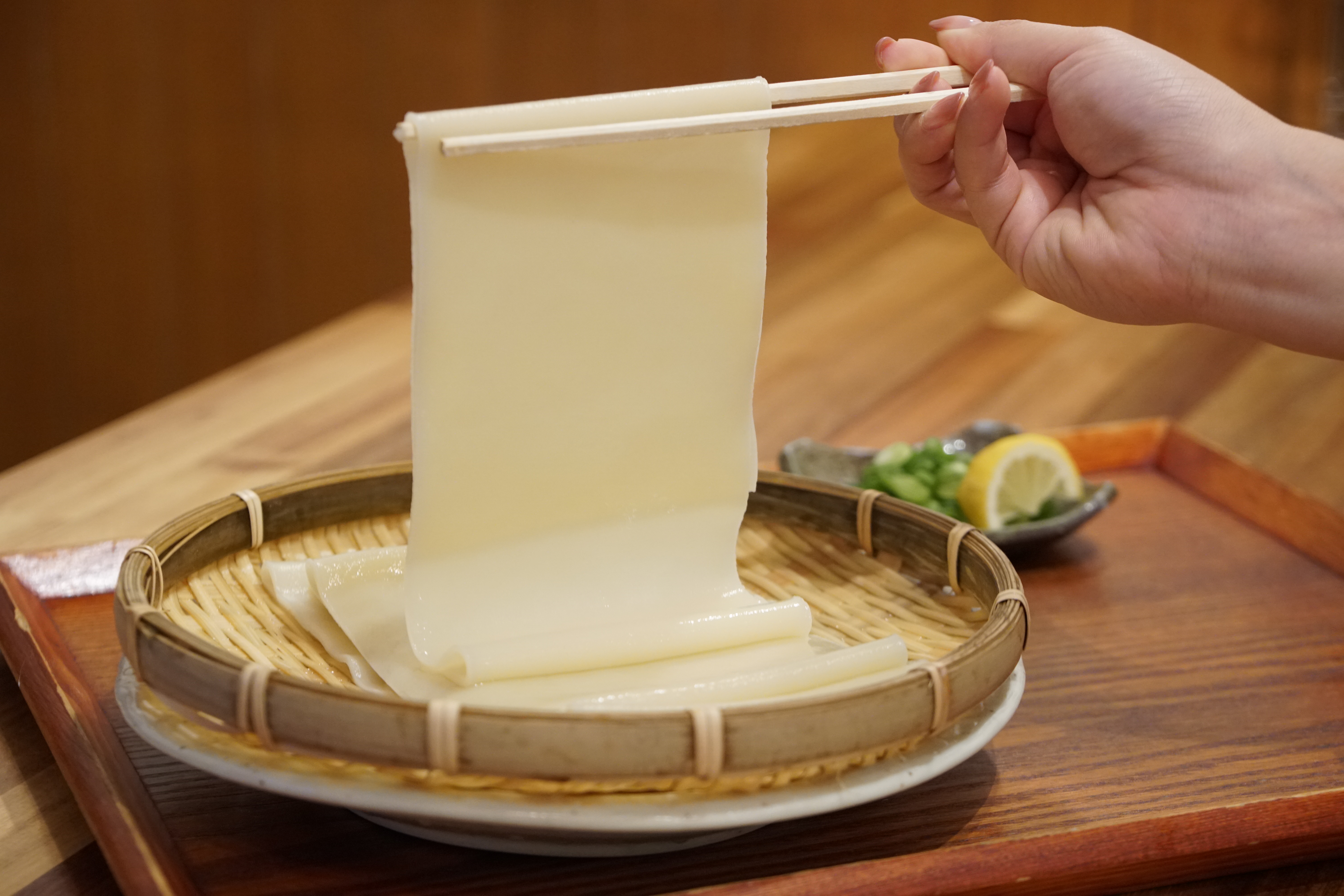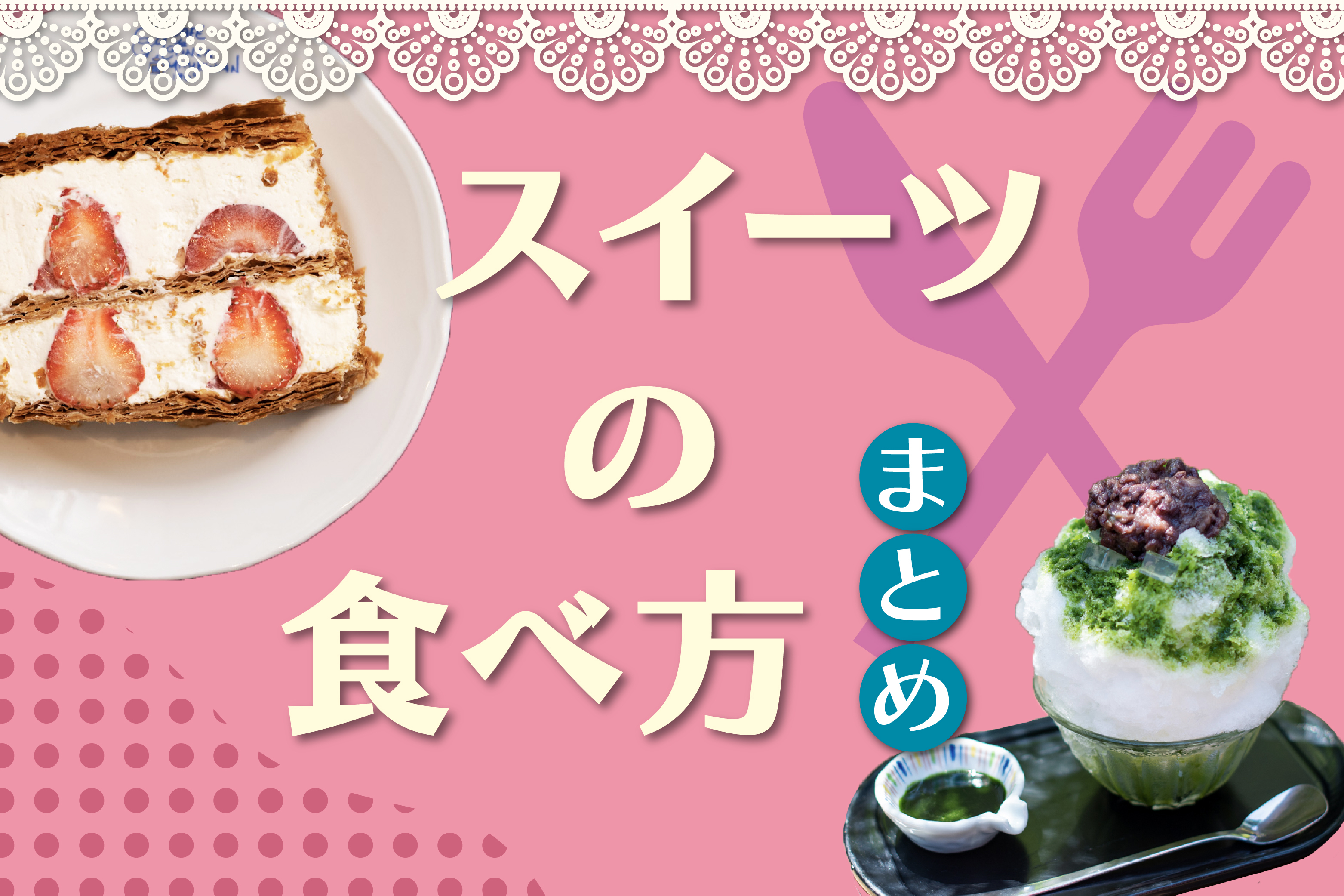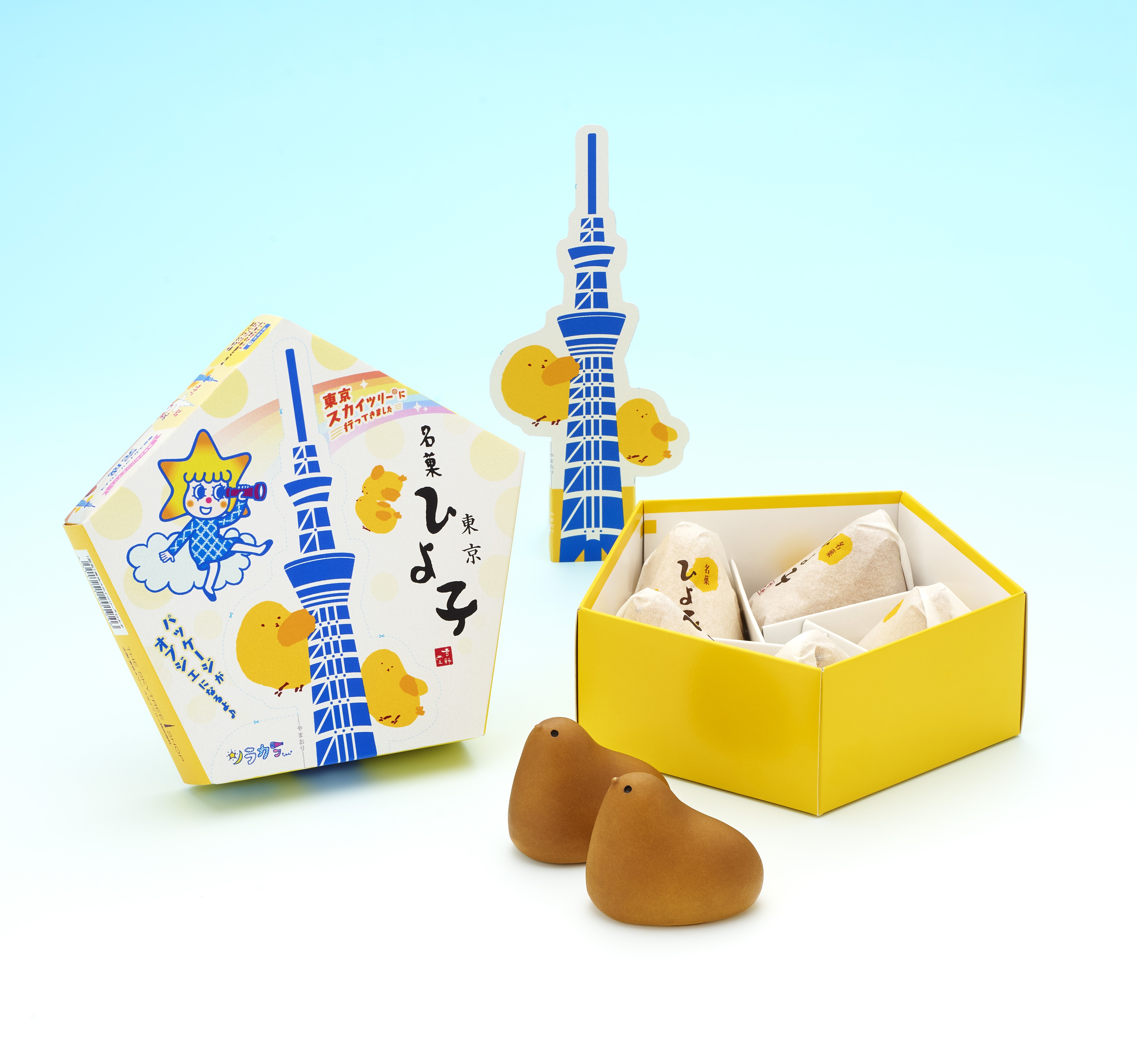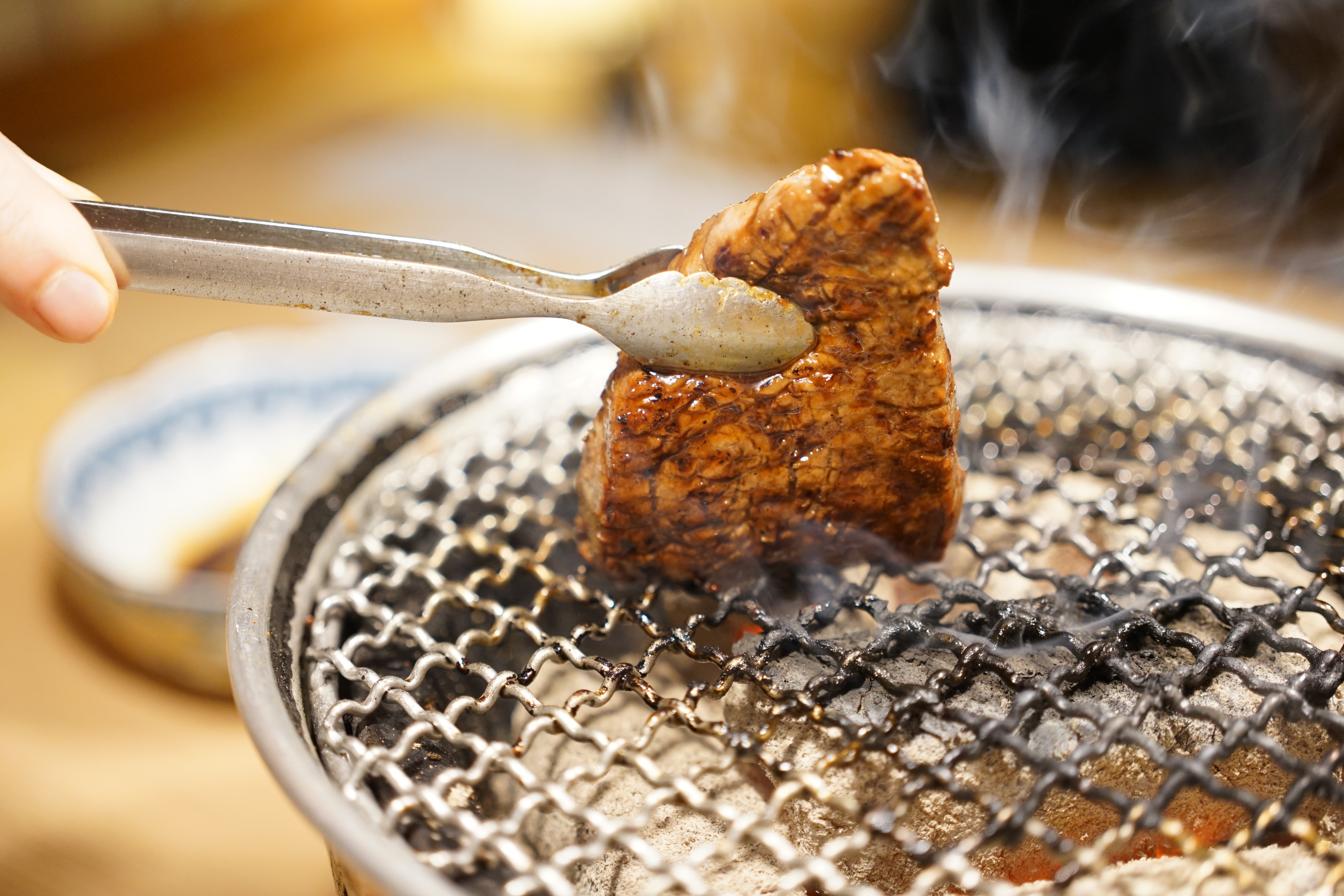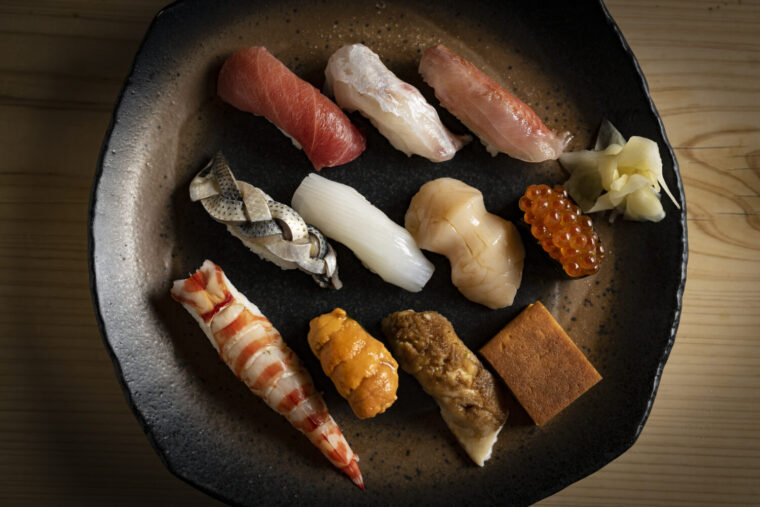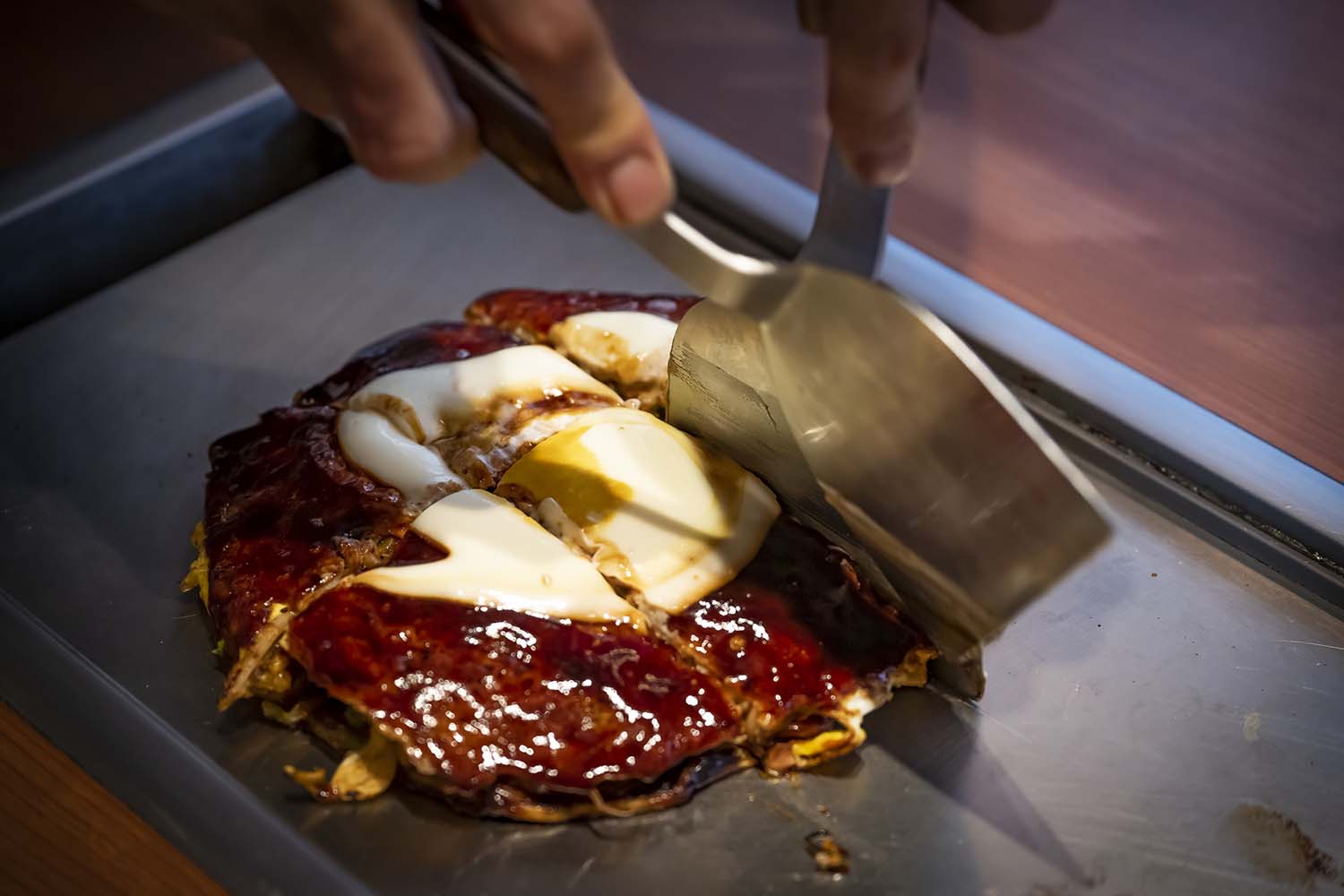
How to eat okonomiyaki | In Osaka style, eat straight from the teppan using kote
There’s quite a difference in the ways okonomiyaki (savory pancakes) are enjoyed between east and west Japan. In Osaka, is one okonomiyaki per person the norm? Is serving okonomiyaki on a plate purely a Kanto style?
For this article, we visited a specialty restaurant, Botejyu®, to find out more about the world of okonomiyaki, and learn how to eat this favorite dish in true Osaka style.
share:
Table of Contents
The story behind okonomiyaki
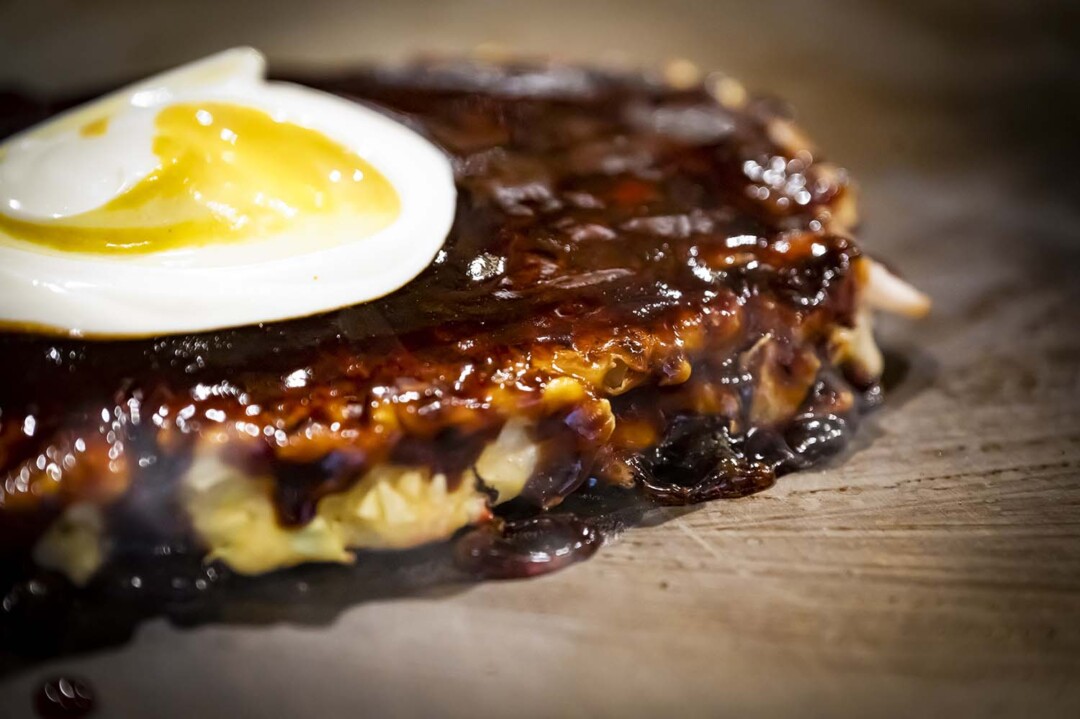
Modern-day okonomiyaki took shape during the food shortages shortly after the end of the Second World War. To make okonomiyaki, wheat flour, which was distributed in relief supplies, was mixed with plenty of water. Readily available ingredients, such as cabbage and spring onion, were added to the batter. Simple to cook and nutritious, this dish quickly spread throughout the Osaka region.
And in fact, Botejyu is one of the restaurants which created today’s Osaka okonomiyaki style.
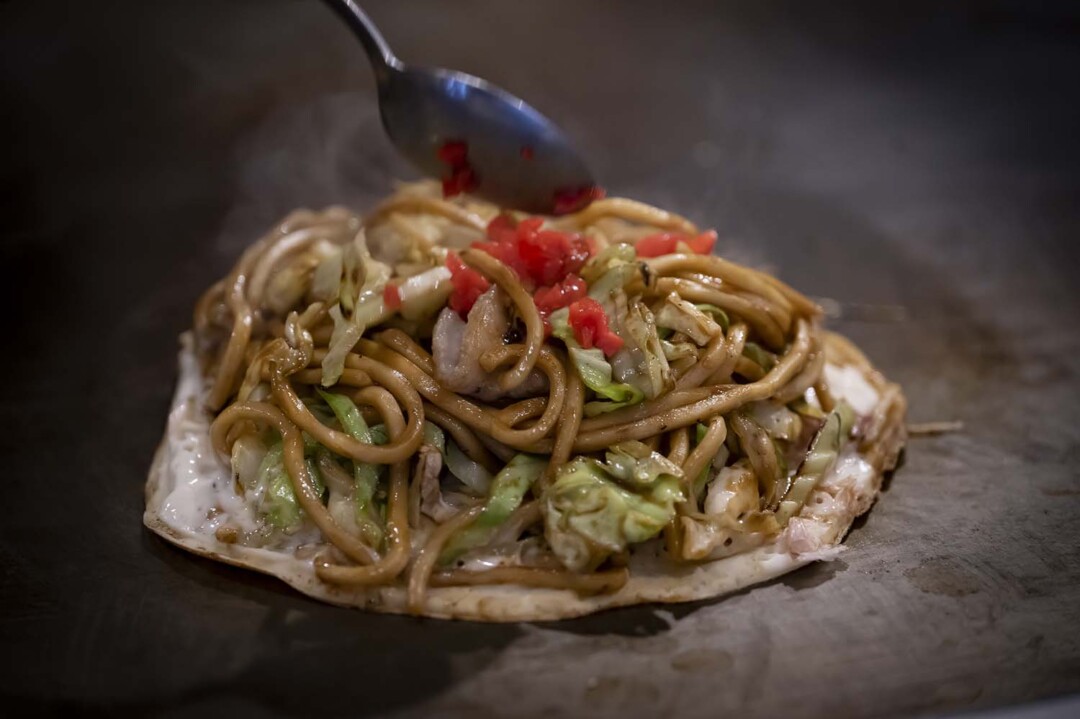
Modan-yaki, which is okonomiyaki with noodles added, originated at Botejyu. It’s said that the modan-yaki first started as a staff meal making use of any available ingredients at the restaurant, before it was served to customers. You might assume that the name “modan” is derived from the English word “modern”, but in fact, it is a contraction of “moridakusan-yaki”, the original name at the time of invention. “Moridakusan” means “large serving”, and true to its name, with thick noodles and plenty of cabbage, this dish will satisfy the hungriest appetites!
The house favorite, tontama, is oval-shaped
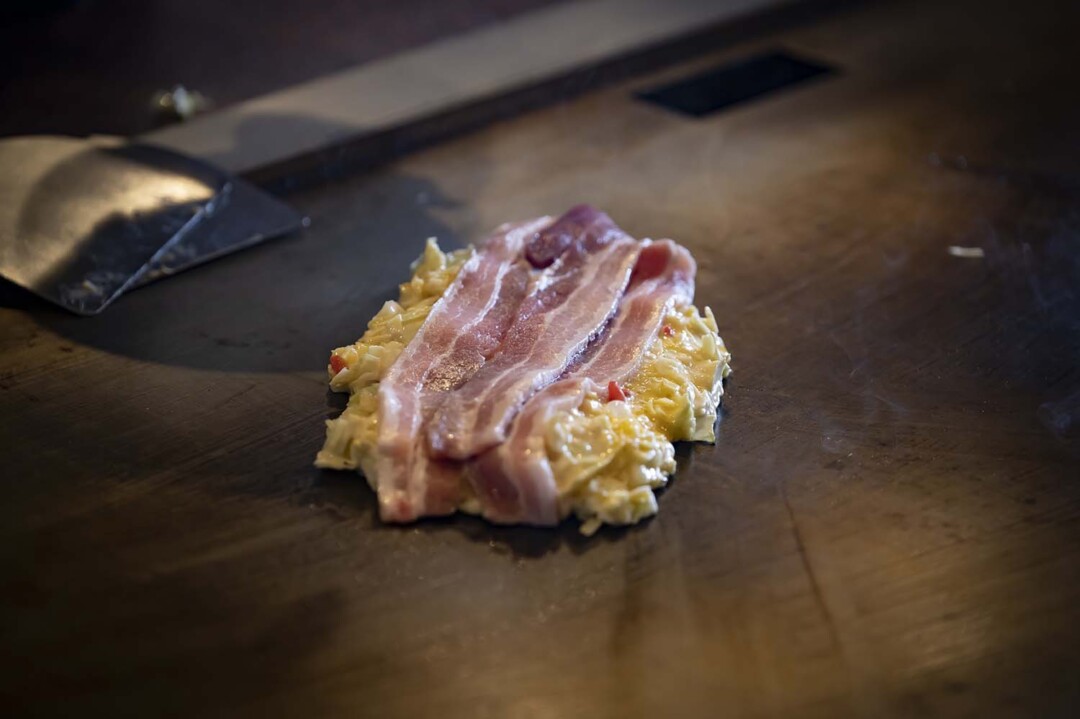
Tontama, the signature dish at Botejyu, contains an entire uncut slice of pork belly. While most tontama are circular, at Botejyu, they are cooked into a characteristic oval shape. They say that the reason for this unique shape is so that when you cut the tontama into bite-size pieces, no matter which piece you eat, you’ll be sure to get a piece of pork.
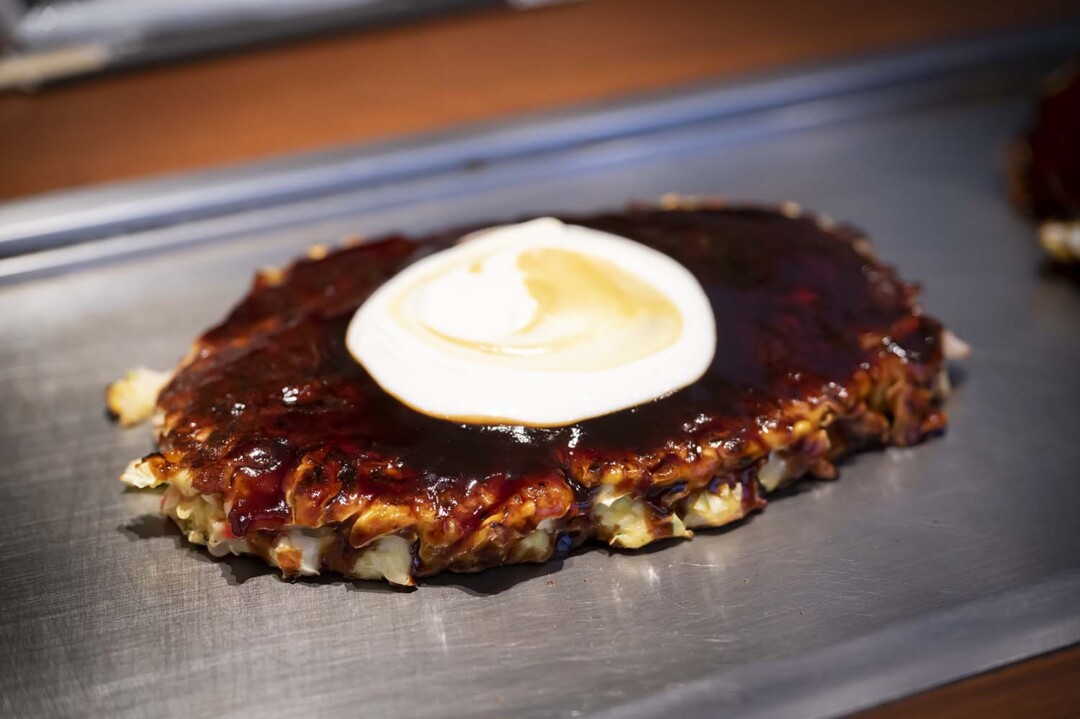
Due to customer requests to adjust their own amount of mayonnaise, at Botejyu, okonomiyaki are garnished with a generous dollop of mayonnaise right in the center, which is spread out with a swirl of mustard.
In fact, it’s said that the custom of serving okonomiyaki with mayonnaise also originated here at Botejyu! Mayonnaise was sold as an optional topping, and became very popular among the “Takarazienne” (performers with the Takarazuka Revue theater troupe) clientele who frequented the restaurant. The reputation of this delicious combination spread throughout Osaka, and before long, okonomiyaki and mayonnaise became an inseparable pair.
Cut into a grid shape
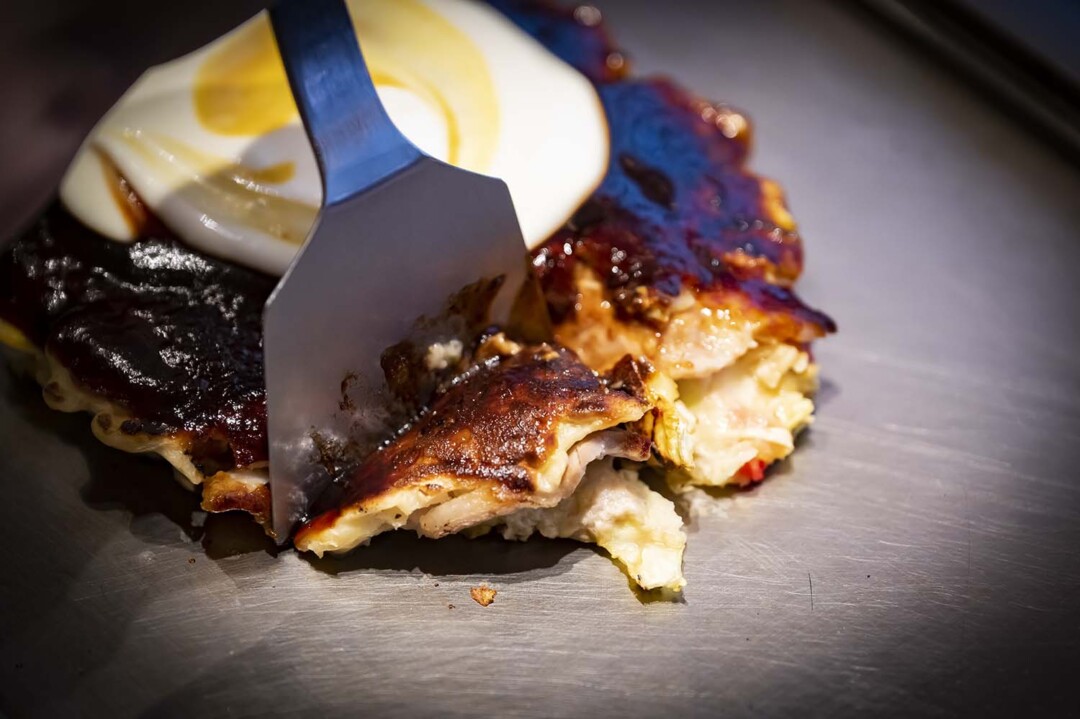

In Kanto, it is common to cut okonomiyaki like a pizza and share it between everyone, but in Osaka, the norm is for each person to have their own okonomiyaki. That’s why the okonomiyaki is cut into a grid shape to produce bite-size pieces. For the first bite, cut off an edge piece without mayonnaise.
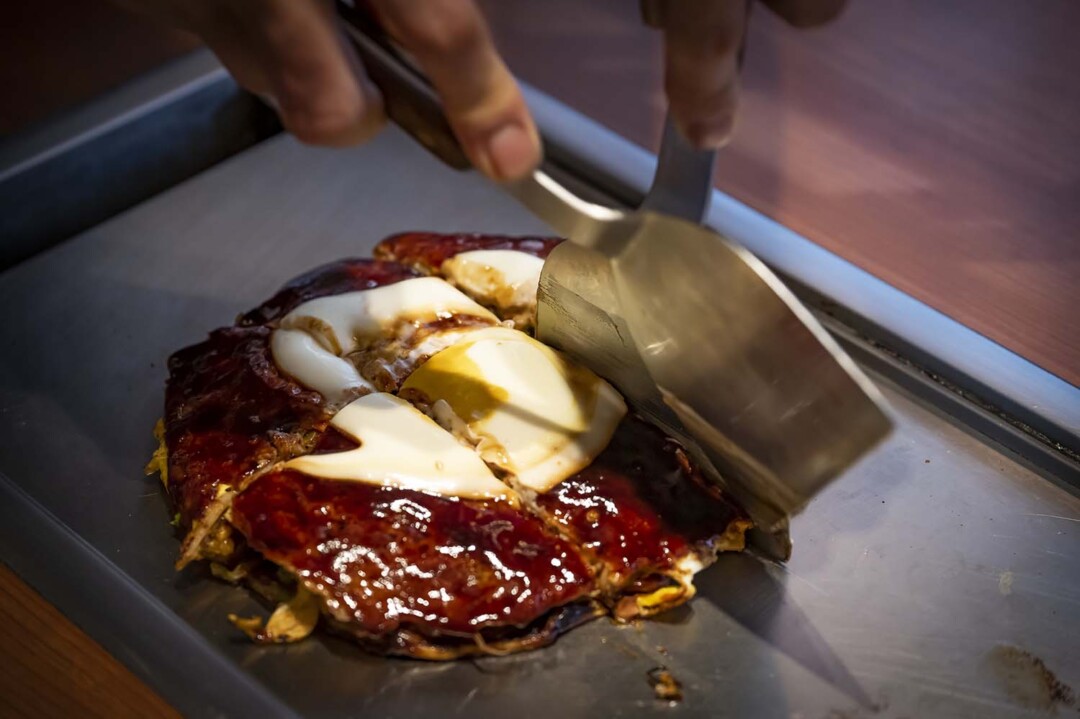
If you have difficulty cutting the okonomiyaki, feel free to call upon the staff for assistance. The signature “Bote-style cut” uses two kote (stiff metal spatulas) back to back to produce a perfect grid cut. Enjoying the expert cutting performance is all part of the okonomiyaki experience!
By the way, depending on the region and restaurant, the spatula used to flip okonomiyaki may be known by names such as “kote”, “teko”, and “hera”. In Osaka, most people call this tool “kote” or “teko”. At Botejyu, it’s called “kote”.
The Osaka style is to eat straight from the teppan using kote
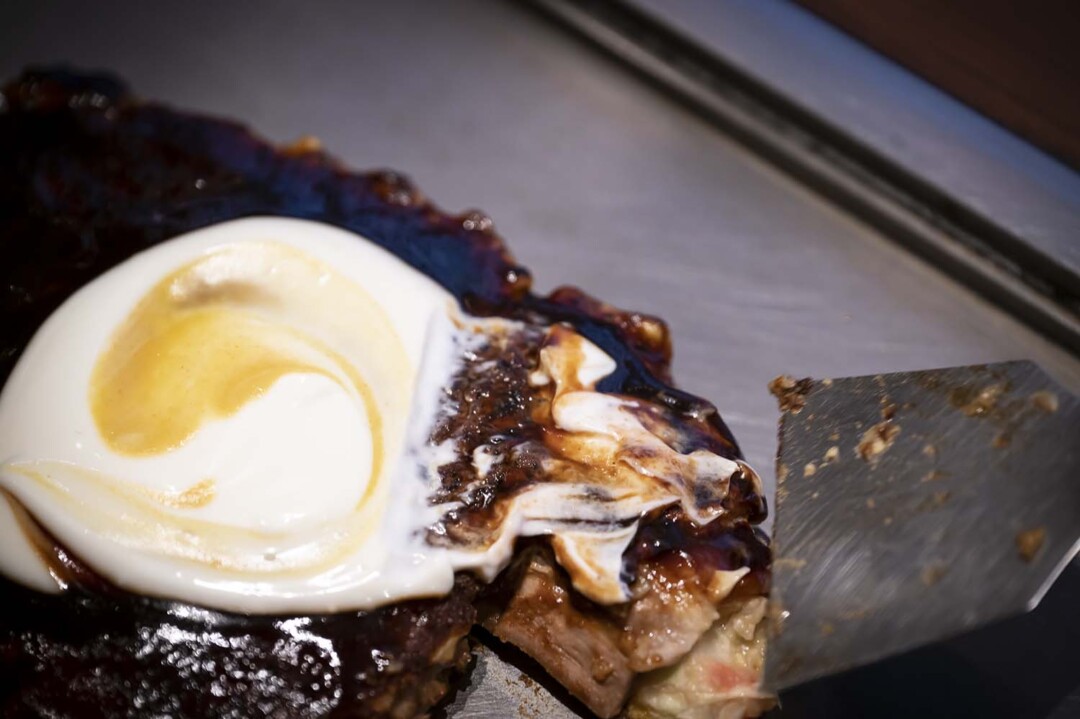

After trying an edge piece dressed only with sauce, use your kote to add mayonnaise and mustard to the next piece, as you like.
When eating okonomiyaki In Kanto, most people cut it into slices to share, serve on plates, and enjoy with chopsticks. However, in Osaka, it’s common to eat okonomiyaki straight off the teppan (steel griddle) using kote. Osakans see okonomiyaki as something to be enjoyed piping hot, blowing on it to cool before each bite.
Condiments and additional sauce to suit your taste
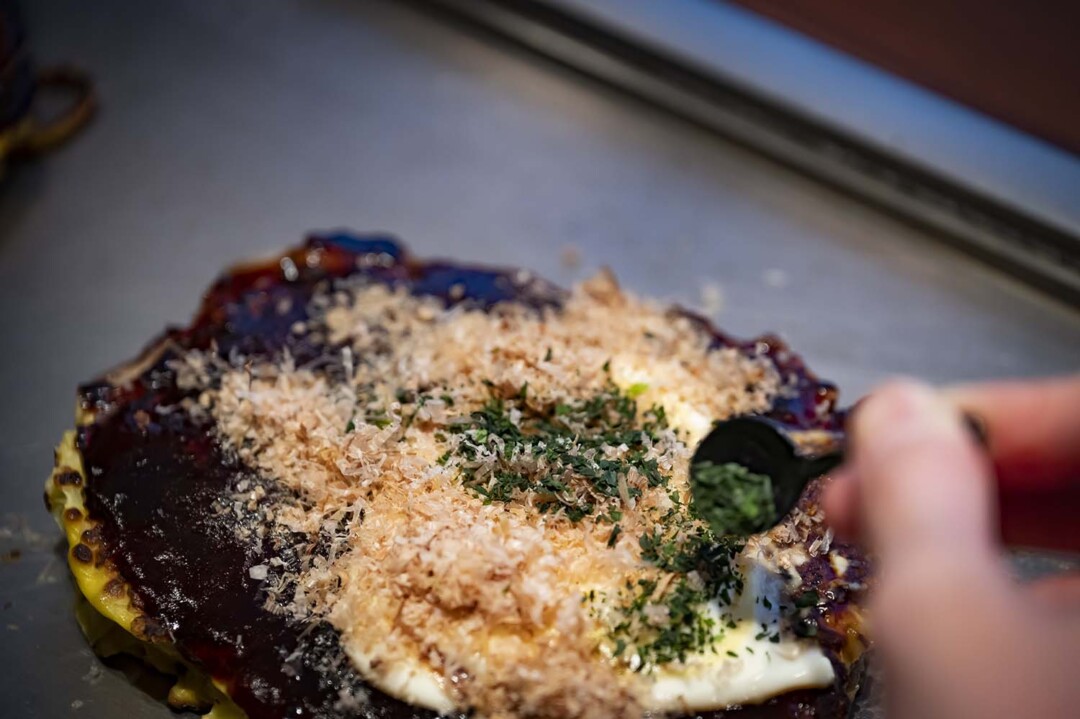
At Botejyu, garnishes such as aonori (green seaweed flakes) and katsuobushi (dried skipjack tuna shavings) are provided at the table, to enjoy as you like. You can sprinkle across the entire okonomiyaki, or customize each bite.
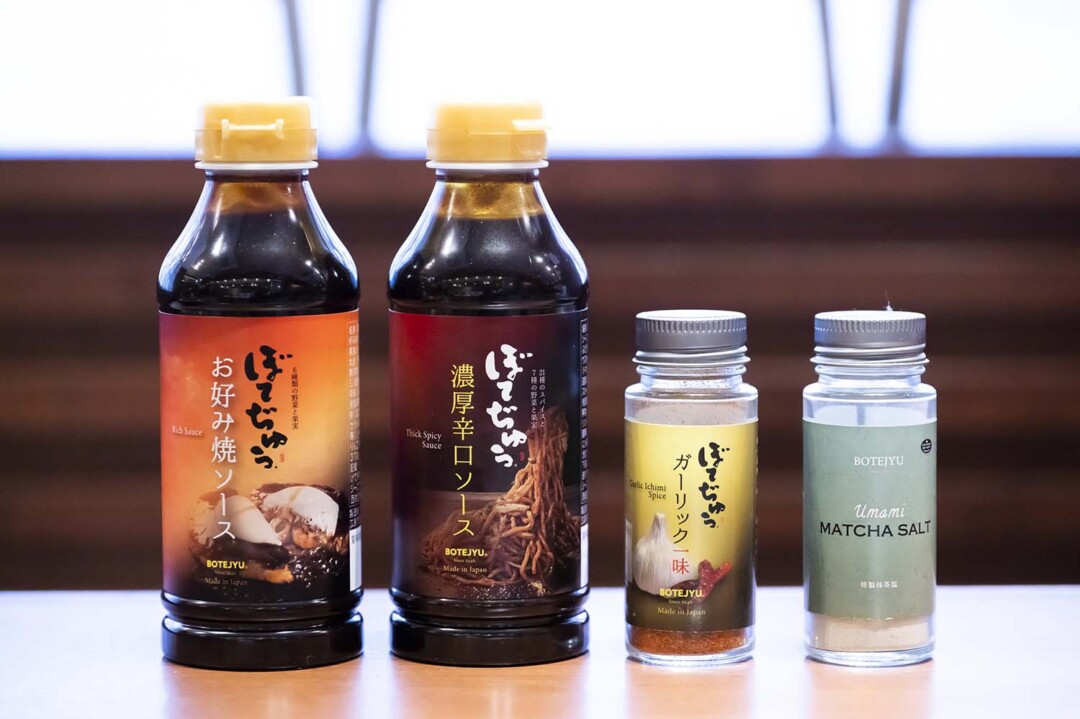
Botejyu also offers their own line of unique seasonings, such as a richer, spicier version of their sauce, ichimi togarashi (powdered chili) with garlic, and matcha jio (green tea powder salt), providing a wide range of flavors to experiment with.
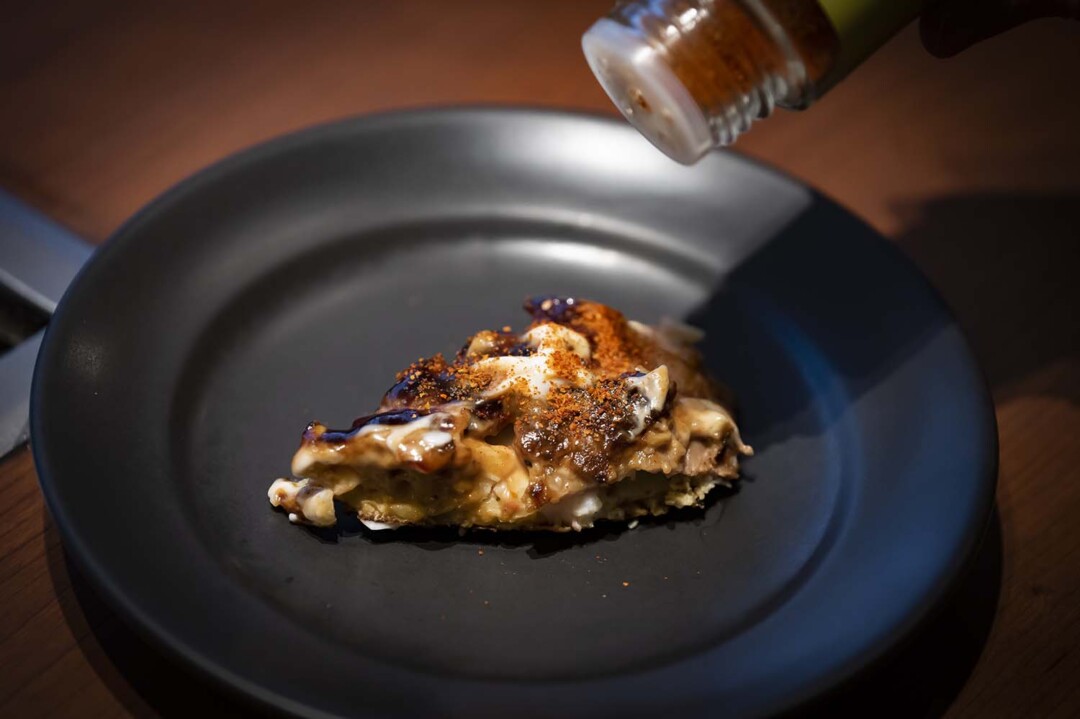
And of course, it’s fine to enjoy your okonomiyaki from a plate, if you prefer.
The counter seats face the teppan, allowing you to enjoy your okonomiyaki straight from the teppan without the need to serve. In fact, it was Botejyu who also popularized this style of dining at the counter, which is now common throughout Japan!
Discovering the regional variations between okonomiyaki in Osaka and Kanto, such as cutting into pizza-shaped slices or square grid shapes, and eating directly using kote, has deepened our interest in this popular dish. When you visit Osaka, please try enjoying okonomiyaki like your Osakan friends… soon you’ll feel like a real local!
This okonomiyaki specialty restaurant was established in Tamade, Osaka in 1946. While carrying on the long-beloved tradition of their original okonomiyaki, Botejyu now offers a wide menu range, from their renowned okonomiyaki to a selection of famous local Osaka dishes. Botejyu considers these seven dishes “treasures to preserve for the future”: okonomiyaki (savory pancake), modan-yaki (okonomiyaki with noodles), yakisoba, Tamade-yaki ( Osaka-style rolled egg), nikutoro horumon (beef tripe in garlic miso sauce), beef garlic rice, and kinsho karaage botekara ( house special fried chicken). Botejyu Sohon Restaurant Dotonbori kindly provided the venue for this article.
*The information is based on the time of reporting or creation, and may differ from the current situation.
tags:
share:











